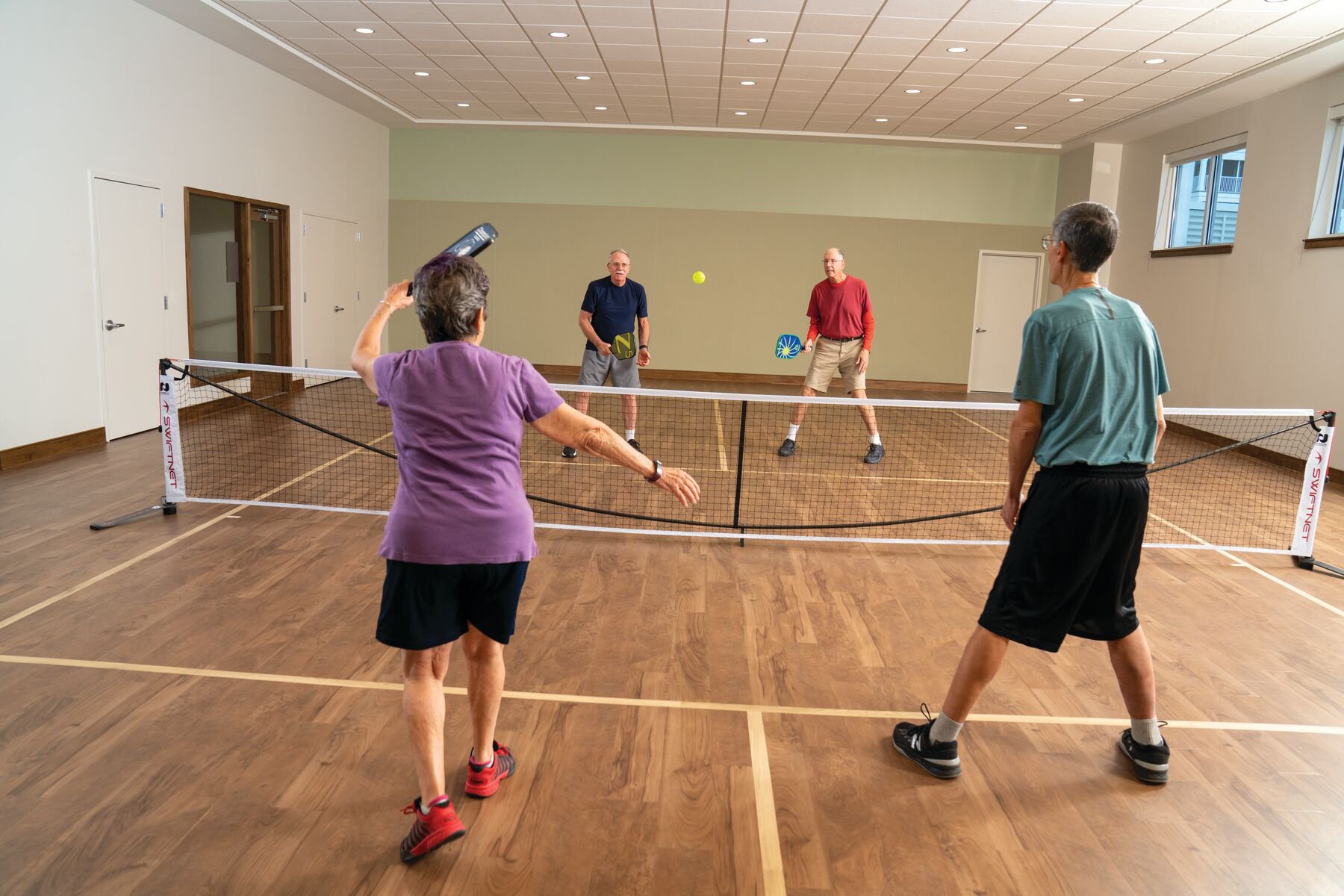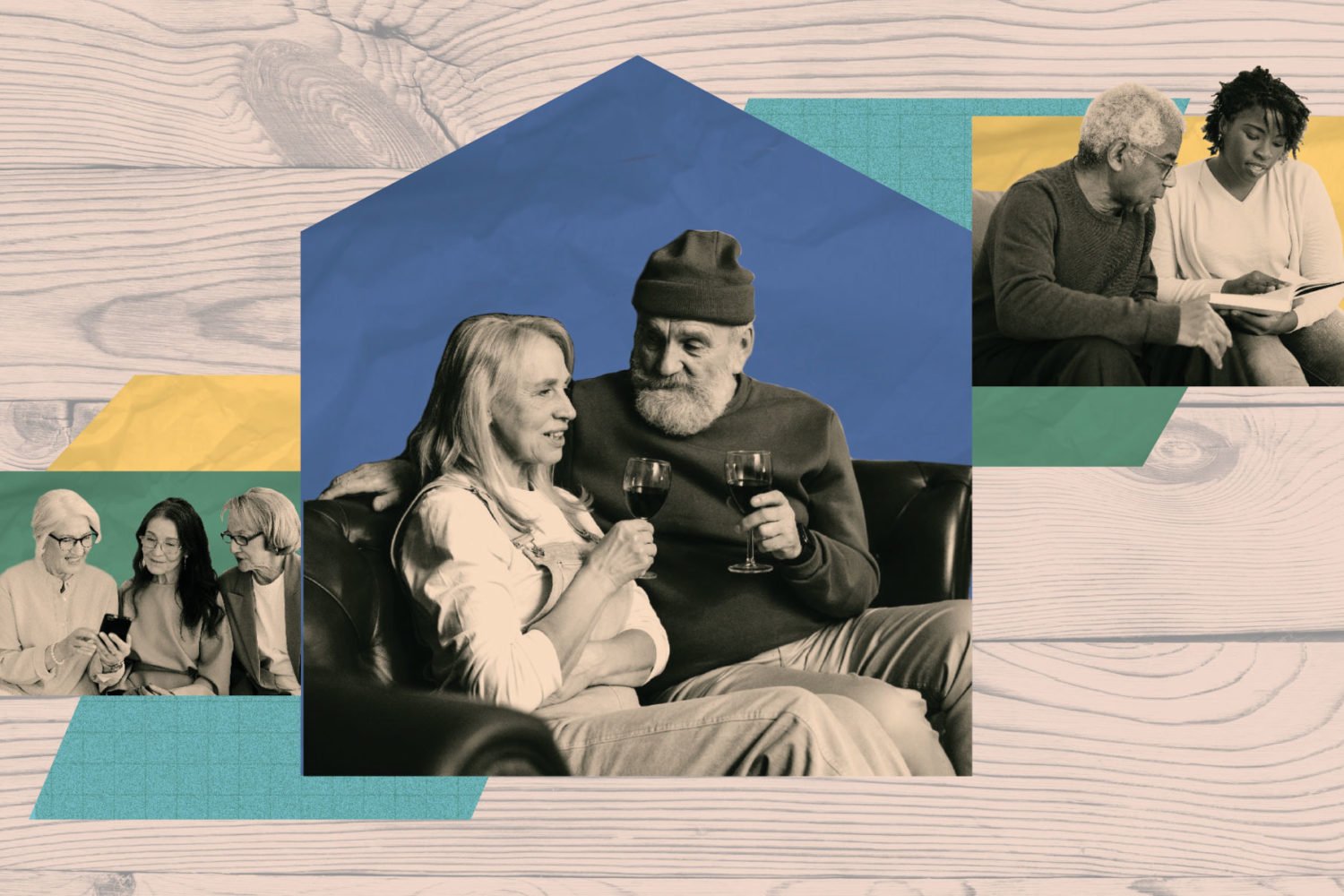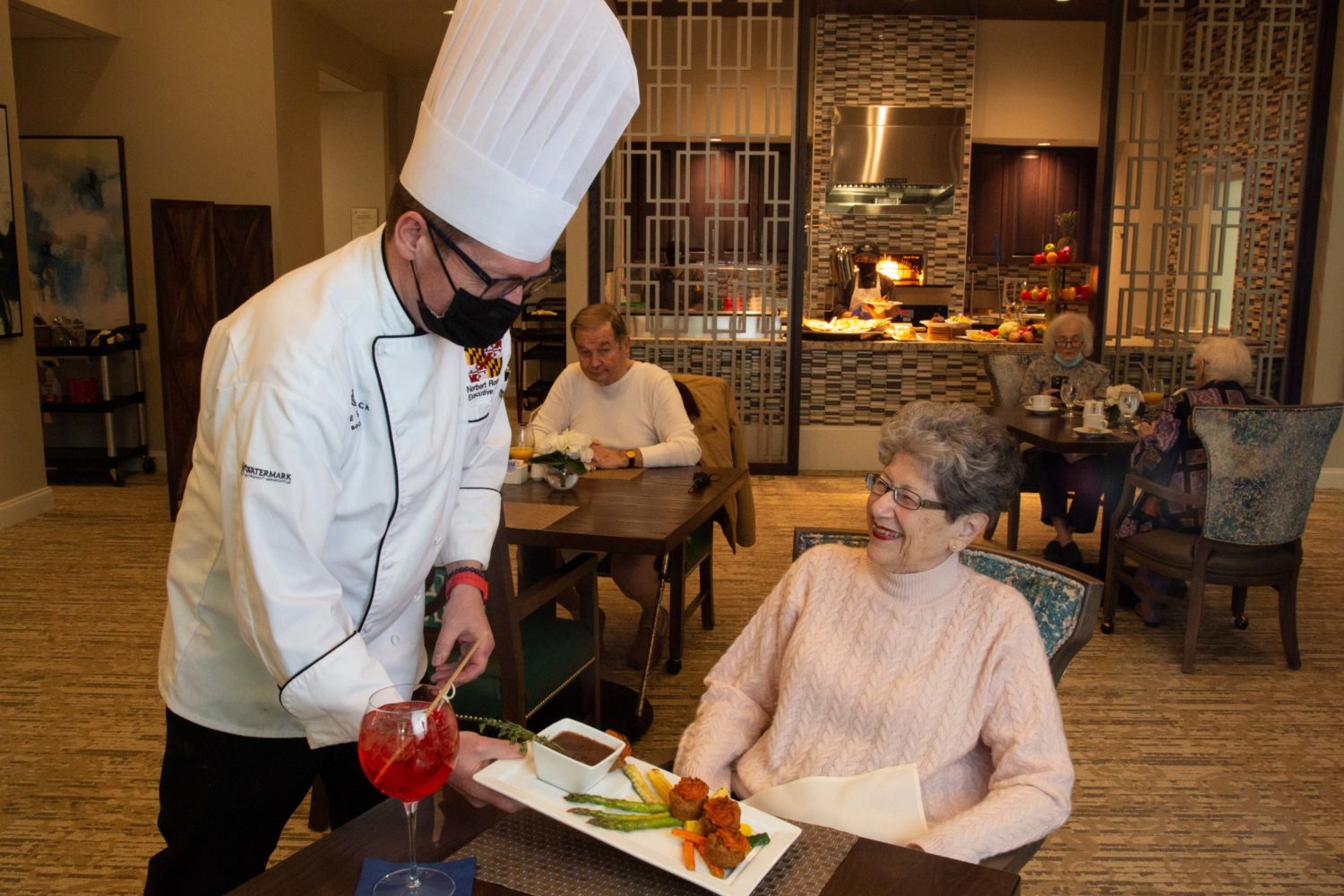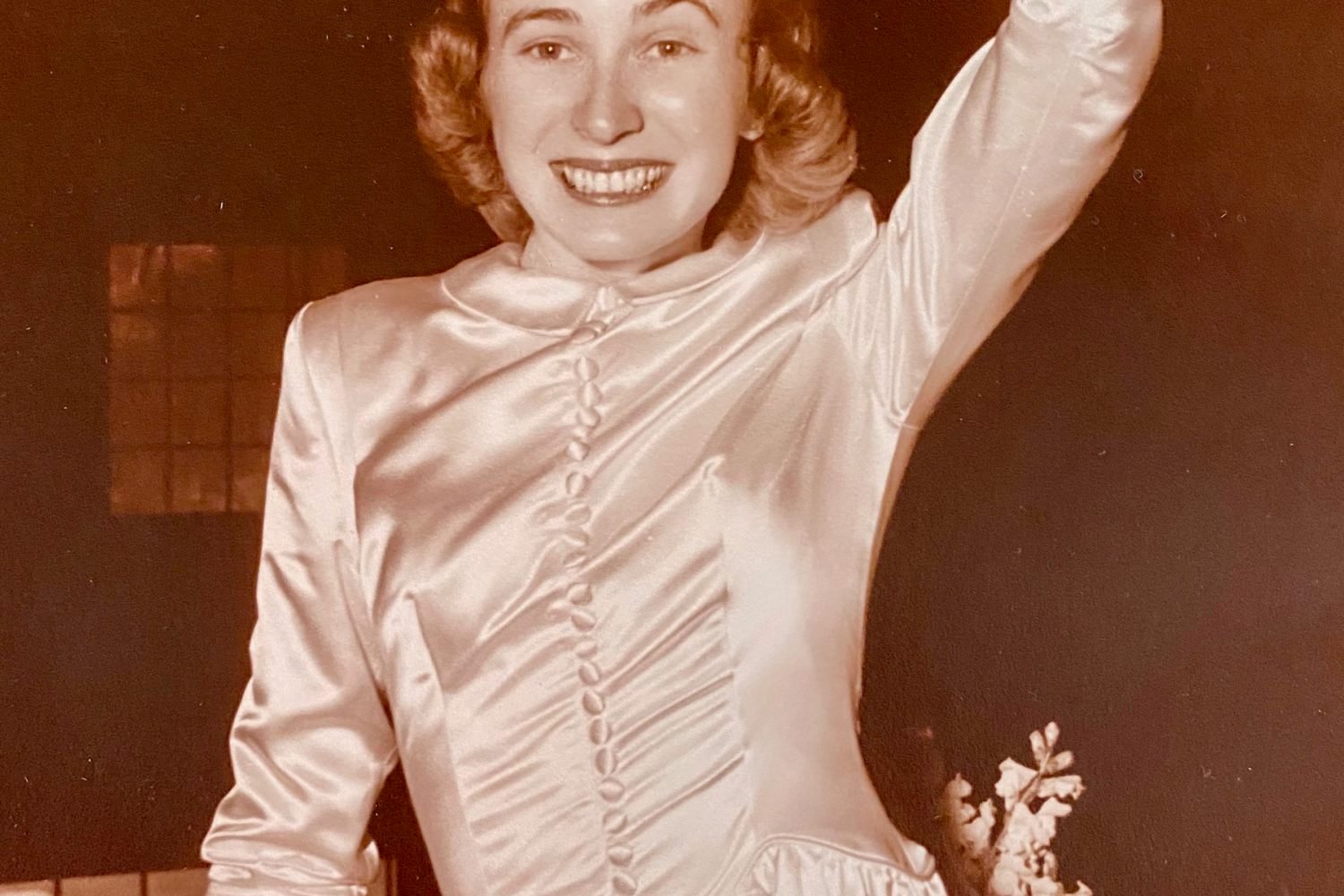The Mather, a high-end retirement community that opened in March in Tysons, has a spa with a salt-therapy “breath lounge” for residents with conditions such as seasonal allergies and asthma. The spa also offers sound therapy, a light-therapy “wave bed,” and a “living wall” of herbs that are made into exfoliating scrubs.
Erickson Senior Living—which locally operates Ashby Ponds in Ashburn, Greenspring in Springfield, Woodleigh Chase in Fairfax, and Riderwood in Silver Spring—last year invested $500 million nationally in improvements to its properties, including upgraded fitness and aquatic centers, walking trails, and pickleball courts.
Senior-living communities have always had programs and amenities to encourage residents to be active (water aerobics, anyone?). But as more people have embraced physical fitness and wellness, they’ve been adding even more—from bocce leagues and art classes to massages and indoor saltwater pools. The result: Some of these places can now feel like high-end resorts.
Focus on Fitness
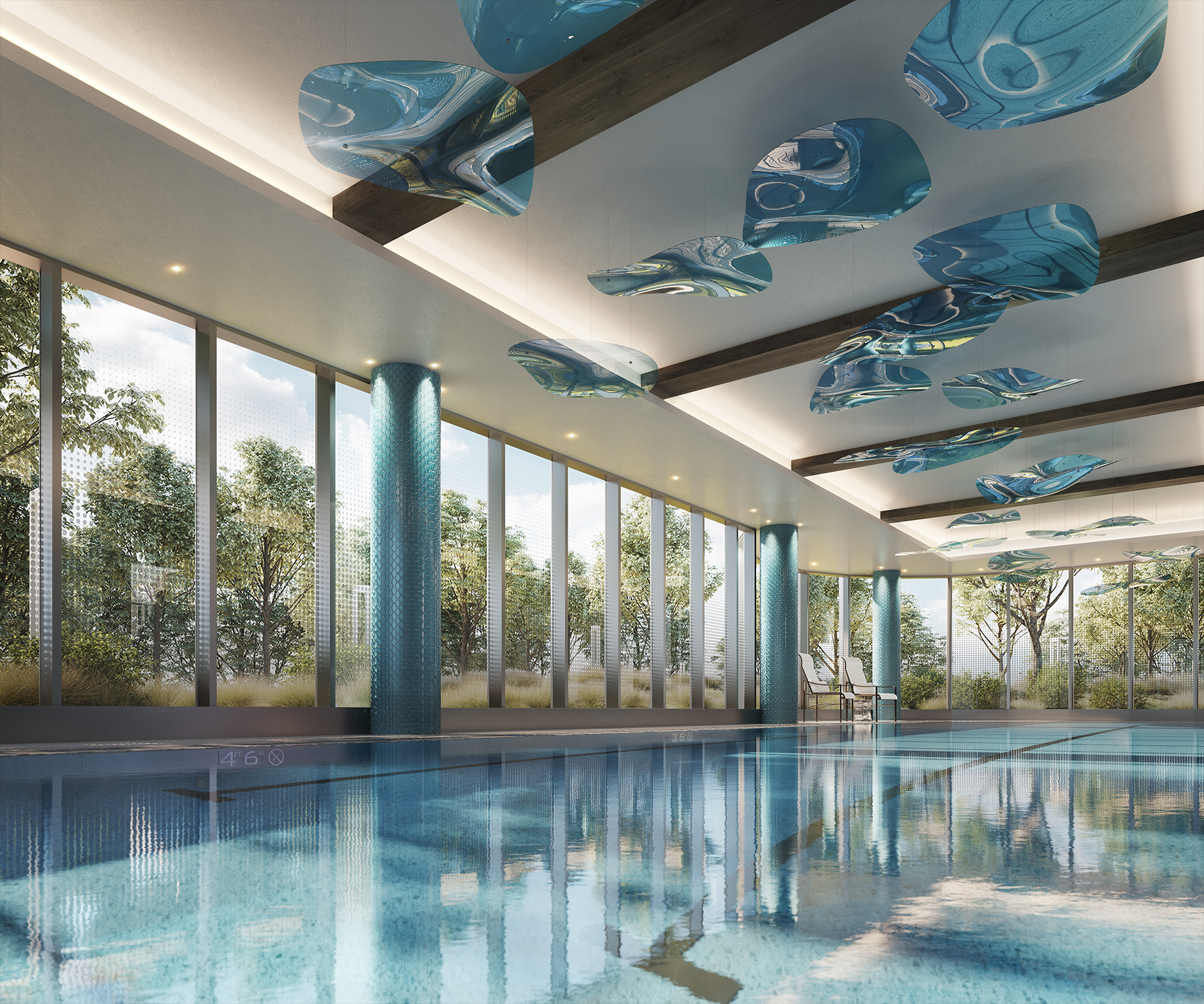
“I’m a gym rat,” says Jack Muety, 80. He and his wife, Lynn, 77, moved to Ashby Ponds, a retirement community in Ashburn, two and a half years ago. At the Ashby Ponds gym, Jack uses an Echelon elliptical machine six times a week. “I’ve always had a thing for fitness,” he says. Lynn, a former international flight attendant, enjoys yoga, bocce, and walking the campus. Ashby Ponds has both a golf simulator and a putting green as well.
The Muetys also appreciate the social aspect of their community. “They say interacting with other people on a regular basis is good for your health,” Jack says.
Staying fit is important to Peggy Love, 75, and husband Jim, 76, who plan to move in March from Arlington to the Mather Tysons. Peggy bikes on a Peloton, attends Pure Barre classes, takes Pilates once a week, and skis in the winter. “I am trying to keep myself healthy,” she says. “I want to be able to travel and carry my luggage.”
Seniors who move to a retirement community are a minority—less than 10 percent of all retirees in the US. But for those who do so, seeing their peers swimming laps, practicing downward dog, or taking a morning stroll can have a healthy effect, says Susan Friedman, a geriatrician and professor of medicine at the University of Rochester: “If you’re in a community where a lot of people are exercising, you’re more likely to start or continue.”
Humans have been searching for the secrets to a long, healthy life for centuries, of course. Research clearly indicates that wellness and physical activity play a big part. An article published last May in the journal Nutrients concluded that while it’s “not clear what exercise should be prescribed to maintain and potentially enhance cognition and brain health with age,” physical activity does “positively affect” cognitive function and brain health, and “improving health through diet and exercise may prevent or delay cognitive decline related to Alzheimer’s and dementia.”
The American College of Lifestyle Medicine prescribes “six pillars” of good health at any age: nutrition (a whole-food, plant-predominant diet), physical activity, restorative sleep, stress management, avoidance of risky substances, and positive social connections—all of which can help treat, prevent, and sometimes reverse chronic disease.
“Physical activity, healthy eating, and social connectedness—all three of these are critically important,” says Friedman. “They’re all interrelated.”
You’ve Got to Have Art
A healthy lifestyle goes beyond physical activity and a balanced diet. In a 2023 article on the website JAMA Network Open, “Lifestyle Enrichment in Later Life and Its Association With Dementia Risk,” the authors looked at 10,318 adults at a median age of 73.8 years. The study showed that certain activities—writing letters or journaling, using a computer, and taking educational classes—were associated with an 11-percent lower risk of dementia. Playing games, cards, or chess and doing crosswords or puzzles were associated with a 9-percent lower risk.
Another habit found to lessen the chance of dementia? Creating art. Which may be why many senior-living communities are including such programs in their offerings.
DC’s Ingleside at Rock Creek and Rockville’s Ingleside at King Farm both have art studios. Ingleside’s Westminster at Lake Ridge community in Virginia has a woodworking shop. The Mather has a pottery wheel. Ashby Ponds has an art club as well as spaces where residents can work in stained glass, acrylics, and watercolors.
Ingleside at King Farm also offers music and theater programs, while Ingleside at Rock Creek has a Cultural Arts Center that hosts musical performances by local groups such as Levine Music and the Washington Conservatory. It also runs a weekly speaker series—local journalists, authors, actors, and politicians have been among those taking part, on such subjects as the Supreme Court and the future of the National Mall.
The Doctor Is In
Another component of wellness that some communities are beefing up: access to onsite medical services. Last year, Ingleside at Rock Creek hired a registered nurse for residents in its 232 independent-living apartments and added a physician and a nurse practitioner at an onsite clinic serviced by George Washington University Medical Faculty Associates. It’s open five days a week.
Erickson Senior Living has an onsite medical center with full-time physicians in its four DC-area communities, a practice that’s been standard for many years. The Grandview, under construction in Bethesda, will also have a medical center on the premises.
Carla Perissinotto, a University of California at San Francisco geriatrician who worked on a 2020 National Academy of Sciences report about social isolation and loneliness in older adults, advises checking the qualifications of onsite doctors. A key question to ask: Do they have specialized training in geriatric medicine or expertise with aging patients?
Perissinotto advises prospective residents to keep in mind that the level of care they require may change over time. Will the community be able to meet their needs? Sometimes, she says, “it’s very hard to see through the glitz.”
This article appears in the March 2024 issue of Washingtonian.

